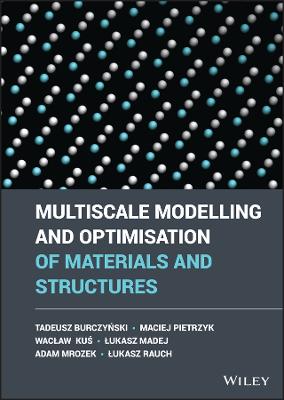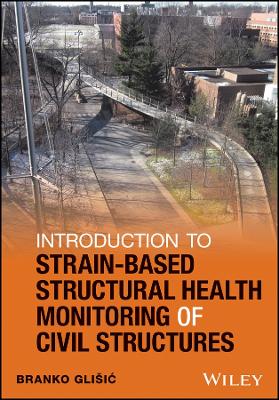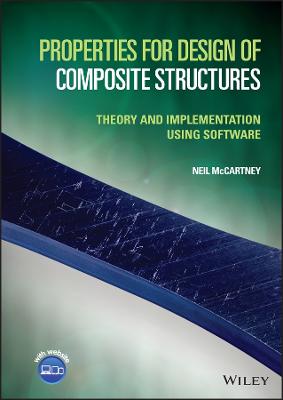Multiscale Modelling and Optimisation of Materials and Structures
 -15%
portes grátis
-15%
portes grátis
Multiscale Modelling and Optimisation of Materials and Structures
Madej, Lukasz; Kus, Waclaw; Mrozek, Adam; Rauch, Lukasz; Burczynski, Tadeusz; Pietrzyk, Maciej
John Wiley & Sons Inc
06/2022
320
Dura
Inglês
9781119975922
15 a 20 dias
776
Descrição não disponível.
Preface ix
Biography xi
1 Introduction to Multiscale Modelling and Optimization 1
1.1 Multiscale Modelling 2
1.1.1 Basic Information on Multiscale Modelling 2
1.1.2 Review of problems connected with multiscale modelling techniques 3
1.1.3 Prospective Applications of the Multiscale Modelling 6
1.2 Optimization 6
1.3 Contents of the Book 7
References 7
2 Modelling of Phenomena 9
2.1 Physical Phenomena in Nanoscale 9
2.1.1 The Linkage Between Quantum and Classical Molecular Mechanics 10
2.1.2 Atomic Potentials 15
2.1.2.1 Lennard-Jones Potential 15
2.1.2.2 Morse Potential 16
2.1.2.3 Stillinger-Weber Potential 17
2.1.2.4 Reactive empirical bond order (REBO) potential 18
2.1.2.5 Reactive force fields (ReaxFF) 19
2.1.2.6 Murrell-Mottram Potential 20
2.1.2.7 Embedded Atom Method 21
2.2 Physical Phenomena in Microscale 22
2.2.1 Microstructural Aspects of Selection of a Microscale Model 22
2.2.1.1 Plastometric Tests 23
2.2.1.2 Inverse Analysis 26
2.2.2 Flow Stress 26
2.2.2.1 Procedure to Determine Flow Stress 26
2.2.2.2 Flow Stress Model 28
2.2.2.3 Identification of the Flow Stress Model 30
2.2.3 Recrystallization 32
2.2.3.1 Static Microstructural Changes 33
2.2.3.2 Dynamic Softening 38
2.2.3.3 Grain Growth 41
2.2.3.4 Effect of Precipitation 42
2.2.4 Phase Transformations 43
2.2.4.1 JMAK-Equation-Based Model 47
2.2.4.2 Differential Equation Model 49
2.2.4.3 Numerical Solution 50
2.2.4.4 Additivity Rule 50
2.2.4.5 Phase Transformation During Heating 51
2.2.4.6 Identification of the Model 52
2.2.4.7 Case Studies 56
2.2.5 Fracture 57
2.2.5.1 Fundamentals of Fracture Mechanics and Classical Fracture and Failure Hypotheses 58
2.2.5.2 Empirical Fracture Criteria 60
2.2.5.3 Fracture Mechanics 61
2.2.5.4 Continuum Damage Mechanics (CDM) 62
2.2.6 Creep 66
2.2.7 Fatigue 71
References 73
3 Computational Methods 81
3.1 Computational Methods for Continuum 81
3.1.1 FEM and XFEM 81
3.1.1.1 Principles of Computational Modelling Using FEM 81
3.1.1.2 Principles of Computational Modelling Using FEM 83
3.1.1.3 Extended Finite Element Method 88
3.1.2 BEM and FEM/BEM Coupling 91
3.1.2.1 BEM 91
3.1.2.2 Coupling FEM and BEM 95
3.1.3 Computational Homogenization 96
3.2 Computational Methods for Nano and Micro 101
3.2.1 Classical Molecular Dynamics 101
3.2.1.1 Equations of Motion 101
3.2.1.2 Discretization of Equations of Motion 102
3.2.1.3 Temperature Controller 105
3.2.1.4 Evaluation of the Time Step 108
3.2.1.5 Cutoff Radius and Nearest-Neighbour Lists 109
3.2.1.6 Boundary Conditions 111
3.2.1.7 Size of the Atomistic Domain - Limitations of the Molecular Simulations 112
3.2.2 Molecular Statics 114
3.2.2.1 Equilibrium of Interatomic Forces 114
3.2.2.2 Solution of the Molecular Statics Problem 116
3.2.2.3 Numerical Example of the Molecular Statics 118
3.2.3 Cellular Automata 119
3.2.3.1 Cellular Automata Definitions 119
3.2.4 Monte Carlo Methods 125
3.3 Methods of Optimization 127
3.3.1 Optimization Problem Formulation 127
3.3.2 Methods of Conventional Optimization 127
3.3.3 Methods of Nonconventional Optimization 129
3.3.3.1 Evolutionary Algorithm 129
3.3.3.2 Artificial Immune System 132
3.3.3.3 Particle Swarm Optimization 133
3.3.3.4 Hybrid Optimization Algorithms 134
References 135
4 Preparation of Material Representation 143
4.1 Generation of Nanostructures 143
4.1.1 Modelling of Polycrystals and Material Defects 143
4.1.1.1 Controlled Cooling 145
4.1.1.2 Adjustable Range of Atomic Interactions 148
4.1.1.3 Squeezing of the Nanoparticles 149
4.1.1.4 Modelling of Structures with Voids 152
4.1.1.5 Material Properties of the Nanostructures 153
4.1.1.6 Models and Mechanical Properties of 2D Materials with Point Defects 156
4.2 Microstructure 160
4.2.1 Generation of Microstructures 160
4.2.1.1 Voronoi Tessellation 161
4.2.1.2 Cellular Automata Grain Growth Algorithm 161
4.2.1.3 Close-Packed Sphere Growth CA-Based Grain Growth Algorithm 167
4.2.1.4 Monte Carlo Grain Growth Algorithm 172
4.2.1.5 DigiCore Library 175
4.2.1.6 Image Processing 178
4.2.2 Properties of the Microstructure Features 182
References 184
5 Examples of Multiscale Simulations 189
5.1 Classification of Multiscale Modelling Methods 189
5.2 Case Studies 196
5.2.1 Nano-Micro 196
5.2.1.1 Multiscale Discrete-Continuum Model 196
5.2.1.2 Conversion of the Nodal Forces to Tractions 200
5.2.1.3 Examples of the Nanoscale-Microscale Modelling 201
5.2.2 Microscale-Macroscale 206
5.2.2.1 Dynamic Recrystallization 207
5.2.2.2 Phase Transformation 210
5.2.2.3 Microshear Bands, Shear Bands, and Strain Localization 211
References 213
6 Optimization and Identification in Multiscale Modelling 219
6.1 Multiscale Optimization 220
6.1.1 Optimization of Atomic Clusters 220
6.1.1.1 Introduction to Optimization of Atomic Clusters 220
6.1.1.2 Optimization of Carbon Atomic Clusters 224
6.1.1.3 New Stable Carbon Networks X and Y 230
6.1.2 Material, Shape, and Topology Optimization 236
6.2 Identification in Multiscale Modelling 242
6.2.1 Material Parameters Identification 244
6.2.2 Multiscale Identification Problem in Stochastic Conditions 245
6.2.3 Shape and Topology Identification 250
6.2.4 Identification of Shape for Multiscale Thermomechanical Problems 251
References 255
7 Computer Implementation Issues 261
7.1 Interactions Between the Analysis and Optimization Solutions 261
7.1.1 Example of Direct Problem Solver File Access 263
7.1.2 Examples of an Internal Script in Direct Problem Solver 264
7.2 Visualization of Large Data Sets 265
7.2.1 Implementation Aspects and Tools 266
7.2.1.1 Graphical Libraries 266
7.2.1.2 Software 268
7.2.1.3 Frameworks 269
7.2.1.4 Data Storing 270
7.2.2 High Efficiency of Visualization 271
7.2.2.1 Dedicated Algorithms 272
7.2.2.2 Hardware Parallelism 272
7.2.2.3 Quality Improvement 273
7.2.2.4 Material Data for Visualization Purposes 274
7.2.3 Visualization Based on Sectioning 277
7.2.3.1 Algorithm Idea 277
7.2.3.2 Background Buffering 278
7.2.3.3 Preferred Sections 279
7.2.4 Functional Assumptions 281
7.2.4.1 Data Preprocessing 281
7.2.4.2 Visualization 284
7.2.5 Case Studies 286
7.2.5.1 Digital Microstructures 286
7.2.5.2 Performance Tests 287
References 291
8 Concluding Remarks 293
Index
Biography xi
1 Introduction to Multiscale Modelling and Optimization 1
1.1 Multiscale Modelling 2
1.1.1 Basic Information on Multiscale Modelling 2
1.1.2 Review of problems connected with multiscale modelling techniques 3
1.1.3 Prospective Applications of the Multiscale Modelling 6
1.2 Optimization 6
1.3 Contents of the Book 7
References 7
2 Modelling of Phenomena 9
2.1 Physical Phenomena in Nanoscale 9
2.1.1 The Linkage Between Quantum and Classical Molecular Mechanics 10
2.1.2 Atomic Potentials 15
2.1.2.1 Lennard-Jones Potential 15
2.1.2.2 Morse Potential 16
2.1.2.3 Stillinger-Weber Potential 17
2.1.2.4 Reactive empirical bond order (REBO) potential 18
2.1.2.5 Reactive force fields (ReaxFF) 19
2.1.2.6 Murrell-Mottram Potential 20
2.1.2.7 Embedded Atom Method 21
2.2 Physical Phenomena in Microscale 22
2.2.1 Microstructural Aspects of Selection of a Microscale Model 22
2.2.1.1 Plastometric Tests 23
2.2.1.2 Inverse Analysis 26
2.2.2 Flow Stress 26
2.2.2.1 Procedure to Determine Flow Stress 26
2.2.2.2 Flow Stress Model 28
2.2.2.3 Identification of the Flow Stress Model 30
2.2.3 Recrystallization 32
2.2.3.1 Static Microstructural Changes 33
2.2.3.2 Dynamic Softening 38
2.2.3.3 Grain Growth 41
2.2.3.4 Effect of Precipitation 42
2.2.4 Phase Transformations 43
2.2.4.1 JMAK-Equation-Based Model 47
2.2.4.2 Differential Equation Model 49
2.2.4.3 Numerical Solution 50
2.2.4.4 Additivity Rule 50
2.2.4.5 Phase Transformation During Heating 51
2.2.4.6 Identification of the Model 52
2.2.4.7 Case Studies 56
2.2.5 Fracture 57
2.2.5.1 Fundamentals of Fracture Mechanics and Classical Fracture and Failure Hypotheses 58
2.2.5.2 Empirical Fracture Criteria 60
2.2.5.3 Fracture Mechanics 61
2.2.5.4 Continuum Damage Mechanics (CDM) 62
2.2.6 Creep 66
2.2.7 Fatigue 71
References 73
3 Computational Methods 81
3.1 Computational Methods for Continuum 81
3.1.1 FEM and XFEM 81
3.1.1.1 Principles of Computational Modelling Using FEM 81
3.1.1.2 Principles of Computational Modelling Using FEM 83
3.1.1.3 Extended Finite Element Method 88
3.1.2 BEM and FEM/BEM Coupling 91
3.1.2.1 BEM 91
3.1.2.2 Coupling FEM and BEM 95
3.1.3 Computational Homogenization 96
3.2 Computational Methods for Nano and Micro 101
3.2.1 Classical Molecular Dynamics 101
3.2.1.1 Equations of Motion 101
3.2.1.2 Discretization of Equations of Motion 102
3.2.1.3 Temperature Controller 105
3.2.1.4 Evaluation of the Time Step 108
3.2.1.5 Cutoff Radius and Nearest-Neighbour Lists 109
3.2.1.6 Boundary Conditions 111
3.2.1.7 Size of the Atomistic Domain - Limitations of the Molecular Simulations 112
3.2.2 Molecular Statics 114
3.2.2.1 Equilibrium of Interatomic Forces 114
3.2.2.2 Solution of the Molecular Statics Problem 116
3.2.2.3 Numerical Example of the Molecular Statics 118
3.2.3 Cellular Automata 119
3.2.3.1 Cellular Automata Definitions 119
3.2.4 Monte Carlo Methods 125
3.3 Methods of Optimization 127
3.3.1 Optimization Problem Formulation 127
3.3.2 Methods of Conventional Optimization 127
3.3.3 Methods of Nonconventional Optimization 129
3.3.3.1 Evolutionary Algorithm 129
3.3.3.2 Artificial Immune System 132
3.3.3.3 Particle Swarm Optimization 133
3.3.3.4 Hybrid Optimization Algorithms 134
References 135
4 Preparation of Material Representation 143
4.1 Generation of Nanostructures 143
4.1.1 Modelling of Polycrystals and Material Defects 143
4.1.1.1 Controlled Cooling 145
4.1.1.2 Adjustable Range of Atomic Interactions 148
4.1.1.3 Squeezing of the Nanoparticles 149
4.1.1.4 Modelling of Structures with Voids 152
4.1.1.5 Material Properties of the Nanostructures 153
4.1.1.6 Models and Mechanical Properties of 2D Materials with Point Defects 156
4.2 Microstructure 160
4.2.1 Generation of Microstructures 160
4.2.1.1 Voronoi Tessellation 161
4.2.1.2 Cellular Automata Grain Growth Algorithm 161
4.2.1.3 Close-Packed Sphere Growth CA-Based Grain Growth Algorithm 167
4.2.1.4 Monte Carlo Grain Growth Algorithm 172
4.2.1.5 DigiCore Library 175
4.2.1.6 Image Processing 178
4.2.2 Properties of the Microstructure Features 182
References 184
5 Examples of Multiscale Simulations 189
5.1 Classification of Multiscale Modelling Methods 189
5.2 Case Studies 196
5.2.1 Nano-Micro 196
5.2.1.1 Multiscale Discrete-Continuum Model 196
5.2.1.2 Conversion of the Nodal Forces to Tractions 200
5.2.1.3 Examples of the Nanoscale-Microscale Modelling 201
5.2.2 Microscale-Macroscale 206
5.2.2.1 Dynamic Recrystallization 207
5.2.2.2 Phase Transformation 210
5.2.2.3 Microshear Bands, Shear Bands, and Strain Localization 211
References 213
6 Optimization and Identification in Multiscale Modelling 219
6.1 Multiscale Optimization 220
6.1.1 Optimization of Atomic Clusters 220
6.1.1.1 Introduction to Optimization of Atomic Clusters 220
6.1.1.2 Optimization of Carbon Atomic Clusters 224
6.1.1.3 New Stable Carbon Networks X and Y 230
6.1.2 Material, Shape, and Topology Optimization 236
6.2 Identification in Multiscale Modelling 242
6.2.1 Material Parameters Identification 244
6.2.2 Multiscale Identification Problem in Stochastic Conditions 245
6.2.3 Shape and Topology Identification 250
6.2.4 Identification of Shape for Multiscale Thermomechanical Problems 251
References 255
7 Computer Implementation Issues 261
7.1 Interactions Between the Analysis and Optimization Solutions 261
7.1.1 Example of Direct Problem Solver File Access 263
7.1.2 Examples of an Internal Script in Direct Problem Solver 264
7.2 Visualization of Large Data Sets 265
7.2.1 Implementation Aspects and Tools 266
7.2.1.1 Graphical Libraries 266
7.2.1.2 Software 268
7.2.1.3 Frameworks 269
7.2.1.4 Data Storing 270
7.2.2 High Efficiency of Visualization 271
7.2.2.1 Dedicated Algorithms 272
7.2.2.2 Hardware Parallelism 272
7.2.2.3 Quality Improvement 273
7.2.2.4 Material Data for Visualization Purposes 274
7.2.3 Visualization Based on Sectioning 277
7.2.3.1 Algorithm Idea 277
7.2.3.2 Background Buffering 278
7.2.3.3 Preferred Sections 279
7.2.4 Functional Assumptions 281
7.2.4.1 Data Preprocessing 281
7.2.4.2 Visualization 284
7.2.5 Case Studies 286
7.2.5.1 Digital Microstructures 286
7.2.5.2 Performance Tests 287
References 291
8 Concluding Remarks 293
Index
Este título pertence ao(s) assunto(s) indicados(s). Para ver outros títulos clique no assunto desejado.
Preface ix
Biography xi
1 Introduction to Multiscale Modelling and Optimization 1
1.1 Multiscale Modelling 2
1.1.1 Basic Information on Multiscale Modelling 2
1.1.2 Review of problems connected with multiscale modelling techniques 3
1.1.3 Prospective Applications of the Multiscale Modelling 6
1.2 Optimization 6
1.3 Contents of the Book 7
References 7
2 Modelling of Phenomena 9
2.1 Physical Phenomena in Nanoscale 9
2.1.1 The Linkage Between Quantum and Classical Molecular Mechanics 10
2.1.2 Atomic Potentials 15
2.1.2.1 Lennard-Jones Potential 15
2.1.2.2 Morse Potential 16
2.1.2.3 Stillinger-Weber Potential 17
2.1.2.4 Reactive empirical bond order (REBO) potential 18
2.1.2.5 Reactive force fields (ReaxFF) 19
2.1.2.6 Murrell-Mottram Potential 20
2.1.2.7 Embedded Atom Method 21
2.2 Physical Phenomena in Microscale 22
2.2.1 Microstructural Aspects of Selection of a Microscale Model 22
2.2.1.1 Plastometric Tests 23
2.2.1.2 Inverse Analysis 26
2.2.2 Flow Stress 26
2.2.2.1 Procedure to Determine Flow Stress 26
2.2.2.2 Flow Stress Model 28
2.2.2.3 Identification of the Flow Stress Model 30
2.2.3 Recrystallization 32
2.2.3.1 Static Microstructural Changes 33
2.2.3.2 Dynamic Softening 38
2.2.3.3 Grain Growth 41
2.2.3.4 Effect of Precipitation 42
2.2.4 Phase Transformations 43
2.2.4.1 JMAK-Equation-Based Model 47
2.2.4.2 Differential Equation Model 49
2.2.4.3 Numerical Solution 50
2.2.4.4 Additivity Rule 50
2.2.4.5 Phase Transformation During Heating 51
2.2.4.6 Identification of the Model 52
2.2.4.7 Case Studies 56
2.2.5 Fracture 57
2.2.5.1 Fundamentals of Fracture Mechanics and Classical Fracture and Failure Hypotheses 58
2.2.5.2 Empirical Fracture Criteria 60
2.2.5.3 Fracture Mechanics 61
2.2.5.4 Continuum Damage Mechanics (CDM) 62
2.2.6 Creep 66
2.2.7 Fatigue 71
References 73
3 Computational Methods 81
3.1 Computational Methods for Continuum 81
3.1.1 FEM and XFEM 81
3.1.1.1 Principles of Computational Modelling Using FEM 81
3.1.1.2 Principles of Computational Modelling Using FEM 83
3.1.1.3 Extended Finite Element Method 88
3.1.2 BEM and FEM/BEM Coupling 91
3.1.2.1 BEM 91
3.1.2.2 Coupling FEM and BEM 95
3.1.3 Computational Homogenization 96
3.2 Computational Methods for Nano and Micro 101
3.2.1 Classical Molecular Dynamics 101
3.2.1.1 Equations of Motion 101
3.2.1.2 Discretization of Equations of Motion 102
3.2.1.3 Temperature Controller 105
3.2.1.4 Evaluation of the Time Step 108
3.2.1.5 Cutoff Radius and Nearest-Neighbour Lists 109
3.2.1.6 Boundary Conditions 111
3.2.1.7 Size of the Atomistic Domain - Limitations of the Molecular Simulations 112
3.2.2 Molecular Statics 114
3.2.2.1 Equilibrium of Interatomic Forces 114
3.2.2.2 Solution of the Molecular Statics Problem 116
3.2.2.3 Numerical Example of the Molecular Statics 118
3.2.3 Cellular Automata 119
3.2.3.1 Cellular Automata Definitions 119
3.2.4 Monte Carlo Methods 125
3.3 Methods of Optimization 127
3.3.1 Optimization Problem Formulation 127
3.3.2 Methods of Conventional Optimization 127
3.3.3 Methods of Nonconventional Optimization 129
3.3.3.1 Evolutionary Algorithm 129
3.3.3.2 Artificial Immune System 132
3.3.3.3 Particle Swarm Optimization 133
3.3.3.4 Hybrid Optimization Algorithms 134
References 135
4 Preparation of Material Representation 143
4.1 Generation of Nanostructures 143
4.1.1 Modelling of Polycrystals and Material Defects 143
4.1.1.1 Controlled Cooling 145
4.1.1.2 Adjustable Range of Atomic Interactions 148
4.1.1.3 Squeezing of the Nanoparticles 149
4.1.1.4 Modelling of Structures with Voids 152
4.1.1.5 Material Properties of the Nanostructures 153
4.1.1.6 Models and Mechanical Properties of 2D Materials with Point Defects 156
4.2 Microstructure 160
4.2.1 Generation of Microstructures 160
4.2.1.1 Voronoi Tessellation 161
4.2.1.2 Cellular Automata Grain Growth Algorithm 161
4.2.1.3 Close-Packed Sphere Growth CA-Based Grain Growth Algorithm 167
4.2.1.4 Monte Carlo Grain Growth Algorithm 172
4.2.1.5 DigiCore Library 175
4.2.1.6 Image Processing 178
4.2.2 Properties of the Microstructure Features 182
References 184
5 Examples of Multiscale Simulations 189
5.1 Classification of Multiscale Modelling Methods 189
5.2 Case Studies 196
5.2.1 Nano-Micro 196
5.2.1.1 Multiscale Discrete-Continuum Model 196
5.2.1.2 Conversion of the Nodal Forces to Tractions 200
5.2.1.3 Examples of the Nanoscale-Microscale Modelling 201
5.2.2 Microscale-Macroscale 206
5.2.2.1 Dynamic Recrystallization 207
5.2.2.2 Phase Transformation 210
5.2.2.3 Microshear Bands, Shear Bands, and Strain Localization 211
References 213
6 Optimization and Identification in Multiscale Modelling 219
6.1 Multiscale Optimization 220
6.1.1 Optimization of Atomic Clusters 220
6.1.1.1 Introduction to Optimization of Atomic Clusters 220
6.1.1.2 Optimization of Carbon Atomic Clusters 224
6.1.1.3 New Stable Carbon Networks X and Y 230
6.1.2 Material, Shape, and Topology Optimization 236
6.2 Identification in Multiscale Modelling 242
6.2.1 Material Parameters Identification 244
6.2.2 Multiscale Identification Problem in Stochastic Conditions 245
6.2.3 Shape and Topology Identification 250
6.2.4 Identification of Shape for Multiscale Thermomechanical Problems 251
References 255
7 Computer Implementation Issues 261
7.1 Interactions Between the Analysis and Optimization Solutions 261
7.1.1 Example of Direct Problem Solver File Access 263
7.1.2 Examples of an Internal Script in Direct Problem Solver 264
7.2 Visualization of Large Data Sets 265
7.2.1 Implementation Aspects and Tools 266
7.2.1.1 Graphical Libraries 266
7.2.1.2 Software 268
7.2.1.3 Frameworks 269
7.2.1.4 Data Storing 270
7.2.2 High Efficiency of Visualization 271
7.2.2.1 Dedicated Algorithms 272
7.2.2.2 Hardware Parallelism 272
7.2.2.3 Quality Improvement 273
7.2.2.4 Material Data for Visualization Purposes 274
7.2.3 Visualization Based on Sectioning 277
7.2.3.1 Algorithm Idea 277
7.2.3.2 Background Buffering 278
7.2.3.3 Preferred Sections 279
7.2.4 Functional Assumptions 281
7.2.4.1 Data Preprocessing 281
7.2.4.2 Visualization 284
7.2.5 Case Studies 286
7.2.5.1 Digital Microstructures 286
7.2.5.2 Performance Tests 287
References 291
8 Concluding Remarks 293
Index
Biography xi
1 Introduction to Multiscale Modelling and Optimization 1
1.1 Multiscale Modelling 2
1.1.1 Basic Information on Multiscale Modelling 2
1.1.2 Review of problems connected with multiscale modelling techniques 3
1.1.3 Prospective Applications of the Multiscale Modelling 6
1.2 Optimization 6
1.3 Contents of the Book 7
References 7
2 Modelling of Phenomena 9
2.1 Physical Phenomena in Nanoscale 9
2.1.1 The Linkage Between Quantum and Classical Molecular Mechanics 10
2.1.2 Atomic Potentials 15
2.1.2.1 Lennard-Jones Potential 15
2.1.2.2 Morse Potential 16
2.1.2.3 Stillinger-Weber Potential 17
2.1.2.4 Reactive empirical bond order (REBO) potential 18
2.1.2.5 Reactive force fields (ReaxFF) 19
2.1.2.6 Murrell-Mottram Potential 20
2.1.2.7 Embedded Atom Method 21
2.2 Physical Phenomena in Microscale 22
2.2.1 Microstructural Aspects of Selection of a Microscale Model 22
2.2.1.1 Plastometric Tests 23
2.2.1.2 Inverse Analysis 26
2.2.2 Flow Stress 26
2.2.2.1 Procedure to Determine Flow Stress 26
2.2.2.2 Flow Stress Model 28
2.2.2.3 Identification of the Flow Stress Model 30
2.2.3 Recrystallization 32
2.2.3.1 Static Microstructural Changes 33
2.2.3.2 Dynamic Softening 38
2.2.3.3 Grain Growth 41
2.2.3.4 Effect of Precipitation 42
2.2.4 Phase Transformations 43
2.2.4.1 JMAK-Equation-Based Model 47
2.2.4.2 Differential Equation Model 49
2.2.4.3 Numerical Solution 50
2.2.4.4 Additivity Rule 50
2.2.4.5 Phase Transformation During Heating 51
2.2.4.6 Identification of the Model 52
2.2.4.7 Case Studies 56
2.2.5 Fracture 57
2.2.5.1 Fundamentals of Fracture Mechanics and Classical Fracture and Failure Hypotheses 58
2.2.5.2 Empirical Fracture Criteria 60
2.2.5.3 Fracture Mechanics 61
2.2.5.4 Continuum Damage Mechanics (CDM) 62
2.2.6 Creep 66
2.2.7 Fatigue 71
References 73
3 Computational Methods 81
3.1 Computational Methods for Continuum 81
3.1.1 FEM and XFEM 81
3.1.1.1 Principles of Computational Modelling Using FEM 81
3.1.1.2 Principles of Computational Modelling Using FEM 83
3.1.1.3 Extended Finite Element Method 88
3.1.2 BEM and FEM/BEM Coupling 91
3.1.2.1 BEM 91
3.1.2.2 Coupling FEM and BEM 95
3.1.3 Computational Homogenization 96
3.2 Computational Methods for Nano and Micro 101
3.2.1 Classical Molecular Dynamics 101
3.2.1.1 Equations of Motion 101
3.2.1.2 Discretization of Equations of Motion 102
3.2.1.3 Temperature Controller 105
3.2.1.4 Evaluation of the Time Step 108
3.2.1.5 Cutoff Radius and Nearest-Neighbour Lists 109
3.2.1.6 Boundary Conditions 111
3.2.1.7 Size of the Atomistic Domain - Limitations of the Molecular Simulations 112
3.2.2 Molecular Statics 114
3.2.2.1 Equilibrium of Interatomic Forces 114
3.2.2.2 Solution of the Molecular Statics Problem 116
3.2.2.3 Numerical Example of the Molecular Statics 118
3.2.3 Cellular Automata 119
3.2.3.1 Cellular Automata Definitions 119
3.2.4 Monte Carlo Methods 125
3.3 Methods of Optimization 127
3.3.1 Optimization Problem Formulation 127
3.3.2 Methods of Conventional Optimization 127
3.3.3 Methods of Nonconventional Optimization 129
3.3.3.1 Evolutionary Algorithm 129
3.3.3.2 Artificial Immune System 132
3.3.3.3 Particle Swarm Optimization 133
3.3.3.4 Hybrid Optimization Algorithms 134
References 135
4 Preparation of Material Representation 143
4.1 Generation of Nanostructures 143
4.1.1 Modelling of Polycrystals and Material Defects 143
4.1.1.1 Controlled Cooling 145
4.1.1.2 Adjustable Range of Atomic Interactions 148
4.1.1.3 Squeezing of the Nanoparticles 149
4.1.1.4 Modelling of Structures with Voids 152
4.1.1.5 Material Properties of the Nanostructures 153
4.1.1.6 Models and Mechanical Properties of 2D Materials with Point Defects 156
4.2 Microstructure 160
4.2.1 Generation of Microstructures 160
4.2.1.1 Voronoi Tessellation 161
4.2.1.2 Cellular Automata Grain Growth Algorithm 161
4.2.1.3 Close-Packed Sphere Growth CA-Based Grain Growth Algorithm 167
4.2.1.4 Monte Carlo Grain Growth Algorithm 172
4.2.1.5 DigiCore Library 175
4.2.1.6 Image Processing 178
4.2.2 Properties of the Microstructure Features 182
References 184
5 Examples of Multiscale Simulations 189
5.1 Classification of Multiscale Modelling Methods 189
5.2 Case Studies 196
5.2.1 Nano-Micro 196
5.2.1.1 Multiscale Discrete-Continuum Model 196
5.2.1.2 Conversion of the Nodal Forces to Tractions 200
5.2.1.3 Examples of the Nanoscale-Microscale Modelling 201
5.2.2 Microscale-Macroscale 206
5.2.2.1 Dynamic Recrystallization 207
5.2.2.2 Phase Transformation 210
5.2.2.3 Microshear Bands, Shear Bands, and Strain Localization 211
References 213
6 Optimization and Identification in Multiscale Modelling 219
6.1 Multiscale Optimization 220
6.1.1 Optimization of Atomic Clusters 220
6.1.1.1 Introduction to Optimization of Atomic Clusters 220
6.1.1.2 Optimization of Carbon Atomic Clusters 224
6.1.1.3 New Stable Carbon Networks X and Y 230
6.1.2 Material, Shape, and Topology Optimization 236
6.2 Identification in Multiscale Modelling 242
6.2.1 Material Parameters Identification 244
6.2.2 Multiscale Identification Problem in Stochastic Conditions 245
6.2.3 Shape and Topology Identification 250
6.2.4 Identification of Shape for Multiscale Thermomechanical Problems 251
References 255
7 Computer Implementation Issues 261
7.1 Interactions Between the Analysis and Optimization Solutions 261
7.1.1 Example of Direct Problem Solver File Access 263
7.1.2 Examples of an Internal Script in Direct Problem Solver 264
7.2 Visualization of Large Data Sets 265
7.2.1 Implementation Aspects and Tools 266
7.2.1.1 Graphical Libraries 266
7.2.1.2 Software 268
7.2.1.3 Frameworks 269
7.2.1.4 Data Storing 270
7.2.2 High Efficiency of Visualization 271
7.2.2.1 Dedicated Algorithms 272
7.2.2.2 Hardware Parallelism 272
7.2.2.3 Quality Improvement 273
7.2.2.4 Material Data for Visualization Purposes 274
7.2.3 Visualization Based on Sectioning 277
7.2.3.1 Algorithm Idea 277
7.2.3.2 Background Buffering 278
7.2.3.3 Preferred Sections 279
7.2.4 Functional Assumptions 281
7.2.4.1 Data Preprocessing 281
7.2.4.2 Visualization 284
7.2.5 Case Studies 286
7.2.5.1 Digital Microstructures 286
7.2.5.2 Performance Tests 287
References 291
8 Concluding Remarks 293
Index
Este título pertence ao(s) assunto(s) indicados(s). Para ver outros títulos clique no assunto desejado.







